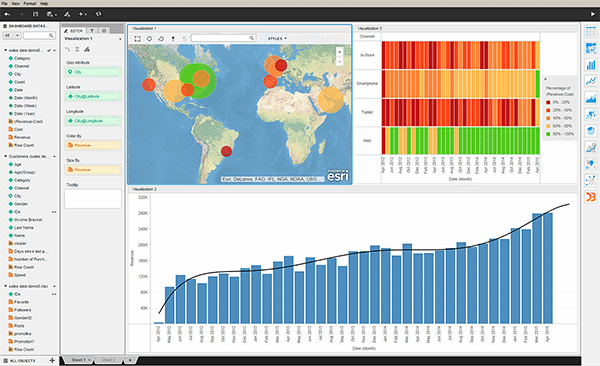Tableau is highly optimized and works quite fast in many applications but in applications where you need to read large volumes of data, like hundreds of millions or billions of rows, it can get dramatically slow (yes there are some illustrations of Tableau with large datasets but they are very isolated, single report demos and in a real life dashboard things can get pretty slow if you need to reaf more than 100 million rows).
Tableau is aware of this problem so back in March 2016, they have purchased HyPer, a high performance database system initially developed as a research project at the Technical University of Munich (TUM). Unfortunately, they did not release any plan for the availability of HyPer yet.
Luckily, there is already a solution out there, more established and powerful than HyPer. The solution is Exasol.
EXASOL analytic database management software is currently the fastest, in-memory analytic database in the world. Since 2008 EXASOL led the Transaction Processing Performance Council's TPC-H benchmark for analytical scenarios, in all data volume-based categories 100 GB, 300 GB, 1 TB, 3 TB, 10 TB, 30 TB and 100 TB.
If you are using Tableau’s great BI, reporting and visualization software to see and understand your data, but are struggling with performance, then you need EXASOL. Using EXASOL as the analytic engine to power your Tableau front-end tool means that you will be able to accelerate your reporting and visualizations dramatically.
You can see Exasol in action below. Note that, Tableau already has a native connection to Exasol.
Exasol does one thing and one thing extremely well. Its high-performance, in-memory, MPP database is specifically designed for in-memory analytics. Exasol analytic database achieves lightning-fast performance with linear scalability by combining in-memory technology, columnar compression and storage, and massively parallel processing.


















